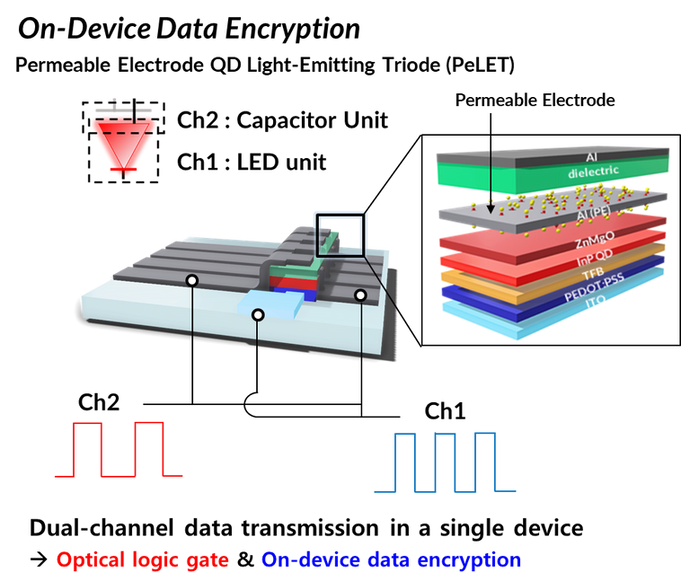
Perovskite & QD LED
1. PeLED Displays
Metal halide perovskites (MHPs) have emerged as a highly promising class of light-emissive materials for next-generation displays, owing to their exceptional optical and electrical properties, including high photoluminescence quantum efficiency, narrow emission bandwidth (FWHM <20 nm, notably smaller than that of InP QDs, FWHM ~35 nm), superior charge-carrier mobility, low energetic disorder, facile solution processing, tunable emission color, and low production cost. With these advantages, MHPs hold strong potential for enabling immersive and realistic AR/VR displays that can approach full Rec.2020 color coverage in the near future.
Nevertheless, several critical hurdles remain before the practical commercialization of perovskite emitters can be realized. Our research seeks to address these challenges through multiple strategies:
Toxicity of lead (Pb): Development of lead-free optoelectronic nanomaterials
Insufficient material/device stability: Defect passivation, surface engineering, and encapsulation methods
Limited performance of blue PeLEDs: Device engineering and novel additive design for improved efficiency and spectral stability
We envision our research on perovskite emitters will lead to a new mainstream in the display industry: "Perovskite Displays" or "PeLED Displays".


2. Permeable electrode light emitting triodes(PeLETs)
Traditional two-terminal optoelectronic devices such as light-emitting diodes (LEDs), solar cells, and photodiodes are essential components of various integrated optoelectronic systems. However, their two-terminal configurations impose challenges on providing additional functionalities and achieving high-density integrated circuitries. Permeable electrode light-emitting triode (PeLETs) is a three-terminal device with two vertically stacked device units, capacitor and LEDs. We introduce a single-device data modulation and encryption approach for efficient and secure VLC by leveraging colloidal QDs and a PeLET architecture. This study demonstrates the potential of PeLET as a novel platform for integrated optical communication and encryption, offering a new paradigm for secure, high-speed VLC using QD-based optoelectronic devices.


